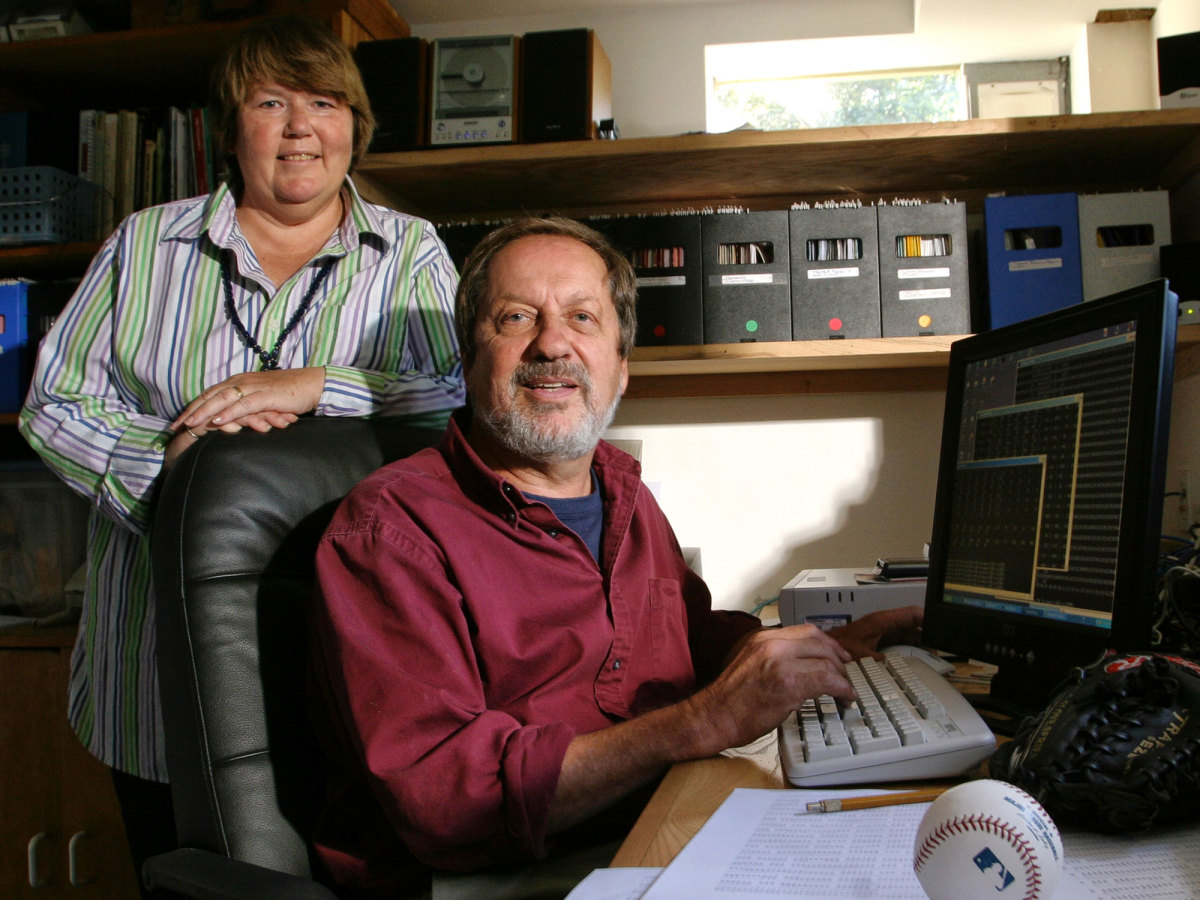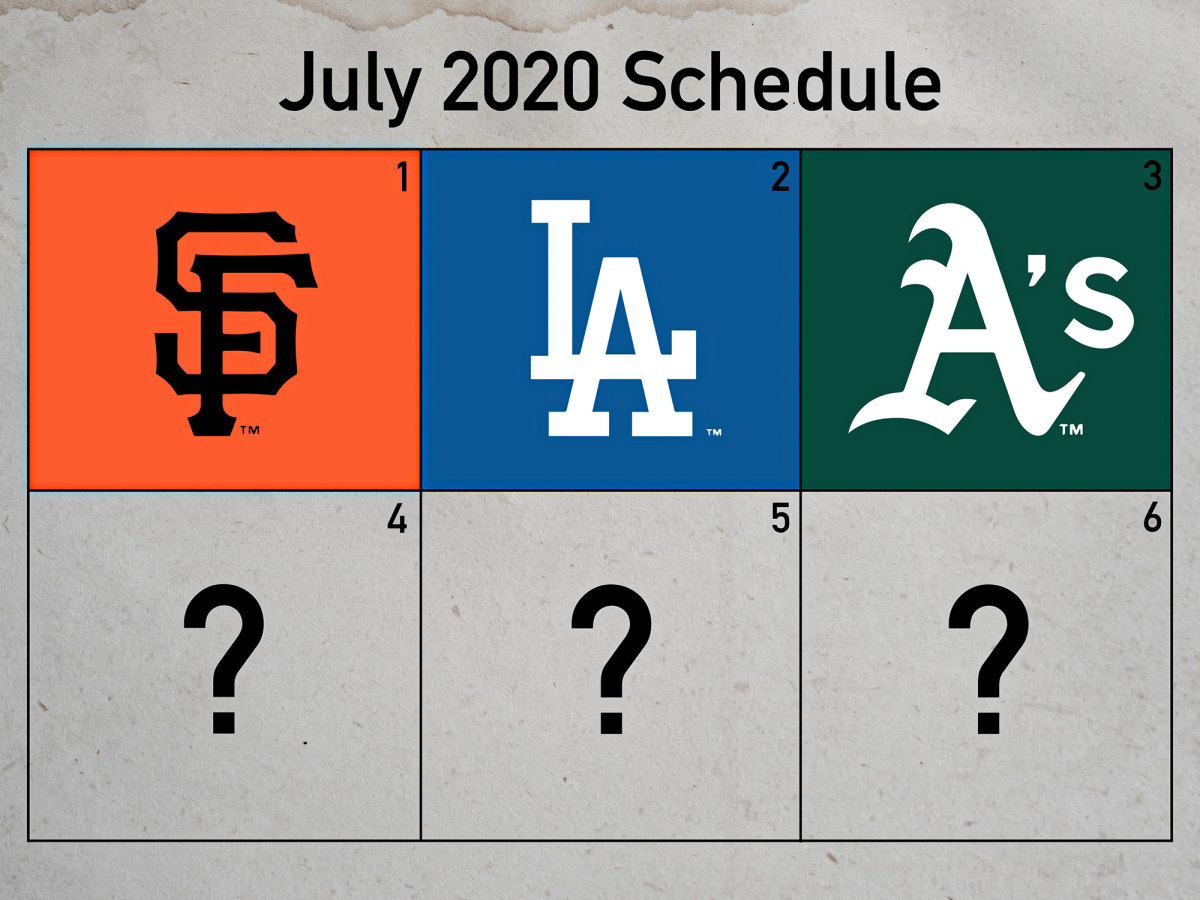How MLB's Old Schedule Makers Would Set Up the 2020 Season
To play in 2020, baseball is reimagining almost everything—fans, rosters, spitting. And, of course, its schedule.
A typical MLB schedule is an incredible act of calendrical harmony: 2,430 games in 26 weeks that ensure each team is treated fairly, travel is workable and television executives are happy. (That’s without getting into the finer elements, such as considering weather, the All-Star break and accommodating stadium events like concerts.) The schedule is built and released months in advance. Now, due to the coronavirus, MLB faces ripping up 2020 and revamping it under dramatic constraints.
MLB’s current proposal describes an 82-game season cut on divisional lines to limit travel. There’s no version of the previously announced schedule that could accommodate that—it requires an entirely new one drawn from scratch. But, unlike many of the tasks that the league is now facing, this one should cause minimal headaches. There should be no mad scramble or heated debate here: A computer program can quickly create a schedule that meets all of the new conditions.
That an act so previously fraught and labor-intensive can now be done with such ease is perhaps one of the clearest ways that baseball has been changed by technology. And no one knows it better than Henry and Holly Stephenson.

The husband-and-wife team created the schedule for every MLB season from 1982 to 2004, one of the most impressive streaks in baseball, until they were finally replaced by a professional computing firm. (By comparison, the NBA, whose schedules were written by the Stephensons in the late ‘70s and early ‘80s, switched to more advanced technology back in 1985.) Now retired and at home on Martha’s Vineyard, Henry, 79, and Holly, 74, say that they haven’t played around with a schedule in at least a decade. But given the circumstances, and with all their extra free time at home, they were happy to answer a question: How would you handle this?
“It looked to us like the issue was how to create some kind of clarity and simplicity,” says Henry, pointing out the features that they look for in a quality schedule. It didn’t take much for them to settle on one that had both.
If MLB follows the previously shared proposal for 2020, it will keep teams in their usual divisions, play in home stadiums, and use a regional system to restrict travel. (So an AL East team will play other teams in the AL East and NL East, an AL Central team will play other teams in the AL Central and NL Central, and so on.) The Stephensons broke down a potential 82-game schedule like this: Each team would play four three-game series against its four divisional opponents, two at home, two on the road. That would account for 48 games across 16 series. The team would also play two three-game series against each of the five clubs in the corresponding division in the opposite league, one home and one away, for 10 more series, or 30 more games. That lands on a uniform system for 78 games, with four left per team to be sprinkled in as four-game series instead of three. And there you have it—a “fairly clear, fairly simple, and relatively fair way of putting together a schedule,” says Henry.
• Inside the Pinstripes: What the Yankees' 2020 Schedule Could Look Like
The Stephensons, despite their time away from scheduling, didn’t take much time to figure this out. (They did use a pencil and paper to sketch it out.) “It’s seared in your brain,” says Henry. “But this was a lot of fun.” Like getting back on a bike?
“Some of it’s like riding a bike,” Henry says with a laugh.
“A schedule’s a lot harder than riding a bike,” Holly counters.
But this schedule would lack the hardest features of their old work. In a typical year, Henry and Holly had to make a calendar that accounted for the Red Sox to be home on Patriots’ Day and the Blue Jays to be home on Canada Day. If a team was on the road for Memorial Day, it didn’t want to be away for July 4th, too, and while clubs didn’t care much about Mother’s Day, they all wanted to sell tickets at home for Father’s Day. In a pandemic-altered 2020, however, the schedule-maker won't have to deal with requests based on packing stadiums. There will be no fear of the chance for April snow in the Northeast and Midwest; no cross-country flights that require a day off. There are no stadium events to work around, and no other commitments, like, say, the time that Pope John Paul II messed with the schedule with a visit to Los Angeles in the middle of a Dodgers homestand in 1987. The Stephensons recall features like these as the most difficult to accommodate—and now, none of them matter. The 2020 schedule will be a breeze for the computer. But it may not have been much harder for Henry and Holly.

Their work with sports schedules began in the ‘70s, when the couple lived on Staten Island and were employed by the New York City Planning Commission. (Both were suited to the work: Holly had studied math at Cornell, and Henry earned a master’s degree in architecture and urban design from Columbia.) They heard that the NBA had hired a series of software firms that had tried and failed to computerize the schedule. So Henry and Holly, with their planning experience and computer savvy, reached out and asked whether the league would let them try—and the couple ended up engineering the basketball schedule from 1978 to 1984. Before the NBA switched to a more advanced system in 1985, the couple was contacted by MLB, whose schedule was far more intricate. The Stephensons mastered it. They used their programming skills to take care of the grunt work and a human touch to handle the details and special requests; Holly would create a handwritten chart with number patterns, and Henry would take care of the maps.
But the work grew increasingly complex over the years: more teams, new divisions, interleague play, extra demands from television networks. In 2005, MLB dropped the Stephensons in favor of an outfit called the Sports Scheduling Group, which ushered in the era of baseball schedules generated entirely with computers.
The Stephensons have been on Martha’s Vineyard ever since. Under normal circumstances, they’d be planning a summer full of visits from their family. Instead, the two of them are hunkered down, a few weeks before Henry turns 80—in wait of what comes next, MLB schedule included. They think the final answer could look much like the pattern that they sketched out. But they know the one guarantee in scheduling is that there’s always more going on under the surface.
“One thing we do know,” Henry says, “is no matter how simple a schedule format looks, they all end up terribly complicated.”
